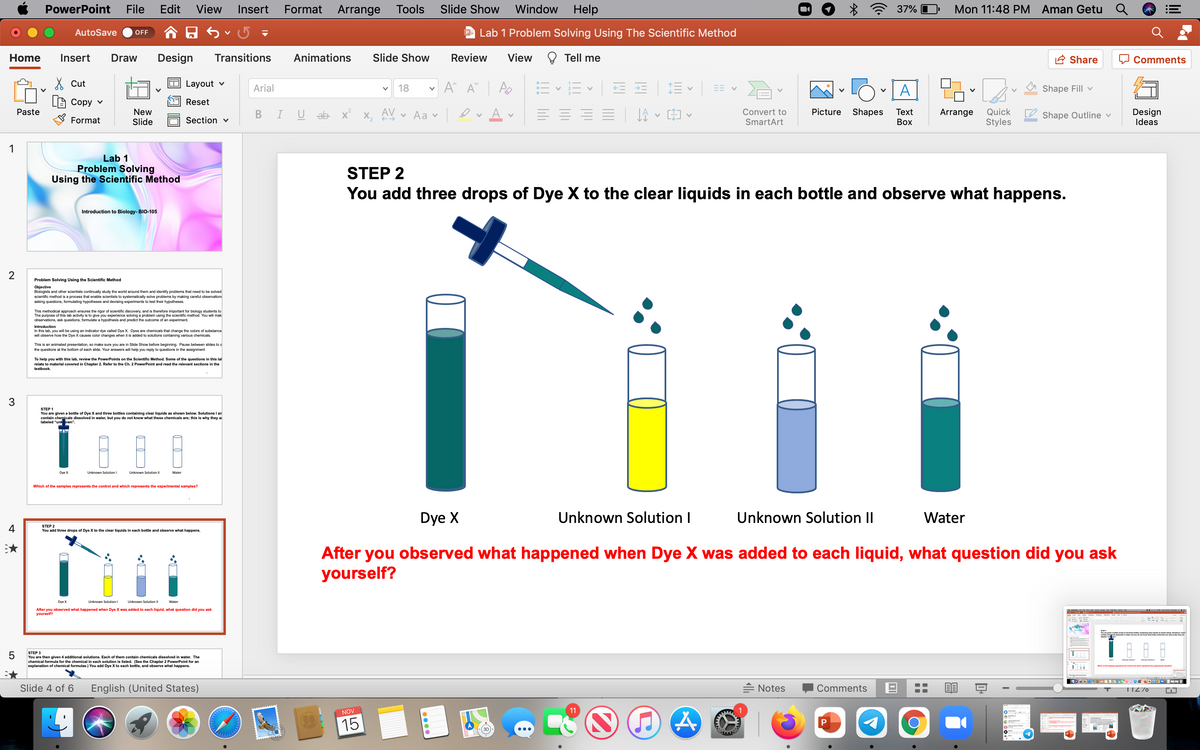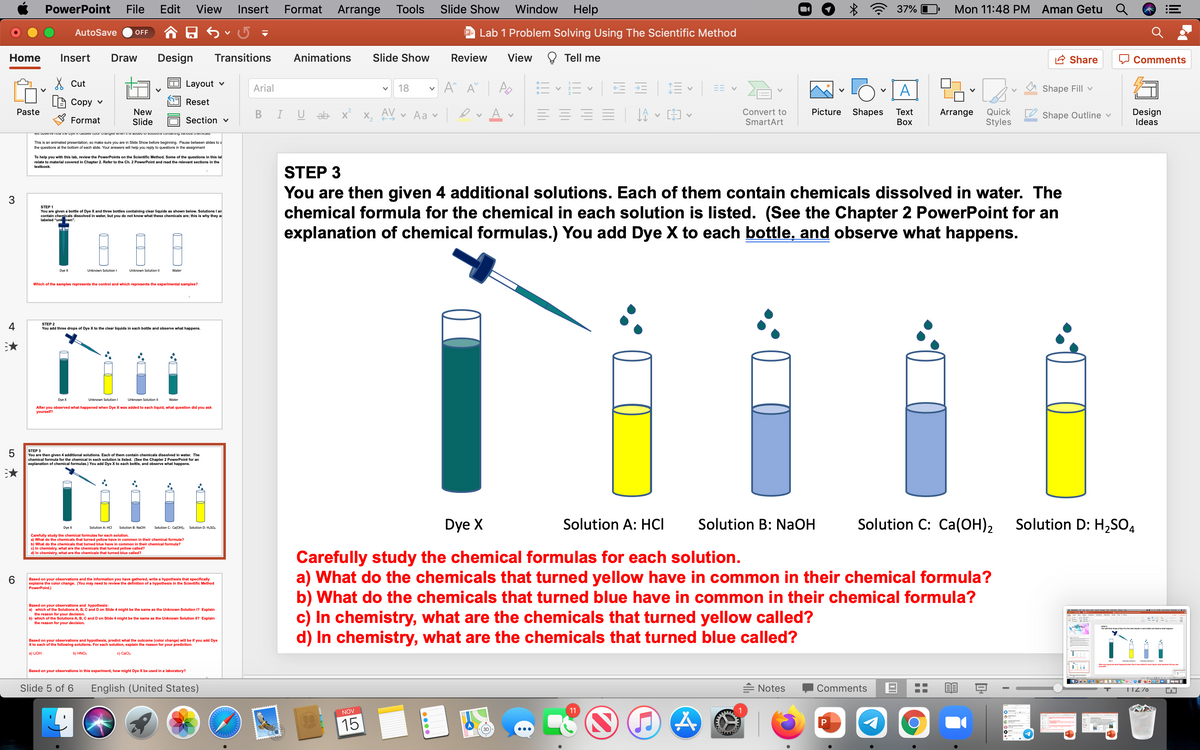STEP 3 You are then given 4 additional solutions. Each of them contain chemicals dissolved in water. The chemical formula for the chemical in each solution is listed. (See the Chapter 2 PowerPoint for an explanation of chemical formulas.) You add Dye X to each bottle, and observe what happens. Dye X Solution A: HCI Solution B: NaOH Solution C: Ca(OH)2 Solution D: H,SO, Carefully study the chemical formulas for each solution. a) What do the chemicals that turned yellow have in common in their chemical formula? b) What do the chemicals that turned blue have in common in their chemical formula? c) In chemistry, what are the chemicals that turned yellow called? d) In chemistry, what are the chemicals that turned blue called?


Trending now
This is a popular solution!
Step by step
Solved in 2 steps with 2 images

Carefully study the chemical formulas for each solution in Step 3 and then select the set of statements that accurately describes the results.
Note: H is hydrogen, OH is hydroxide
The solutions that turn yellow have H in their formula and are acids. The solutions that turn blue have OH in their formula and are bases.
The solutions that turn yellow have OH in their formula and are acids. The solutions that turn blue have H in their formula and are bases.
The solutions that turn yellow have H in their formula and are bases. The solutions that turn blue have OH in their formula and are acids.
The solutions that turn yellow have H in their formula and are bases. The solutions that turn blue have OH in their formula and are neutral.
The solutions that turn yellow have H in their formula and are neutral. The solutions that turn blue have OH in their formula and are bases.
Based on your observations and hypothesis, what do you predict will happen if Dye X is added to aqueous solutions of the following three chemicals?
LiOH HNO3 CaCl₂
LiOH will turn blue because it has OH in its formula. HNO3 will turn yellow because it has H in its formula. CaCl₂ will not turn yellow or blue because it does not have H or OH in its formula
LiOH will turn yellow because it has H in its formula. HNO3 will turn blue because it has O and H. CaCl₂ will turn blue because it forms a basic solution.
LiOH will turn yellow because it has an H in its formula. HNO3 will turn blue because it has O and H. CaCl₂ will not turn yellow or blue because it does not have H or OH in its formula
LiOH will turn blue because it has OH in its formula. HNO3 will turn yellow because it has H. CaCl₂ will turn blue it forms a basic solution.
LiOH will turn yellow because it has an H in its formula. HNO3 will turn blue because it has O and H. CaCl₂ will turn yellow it forms an acidic solution.







